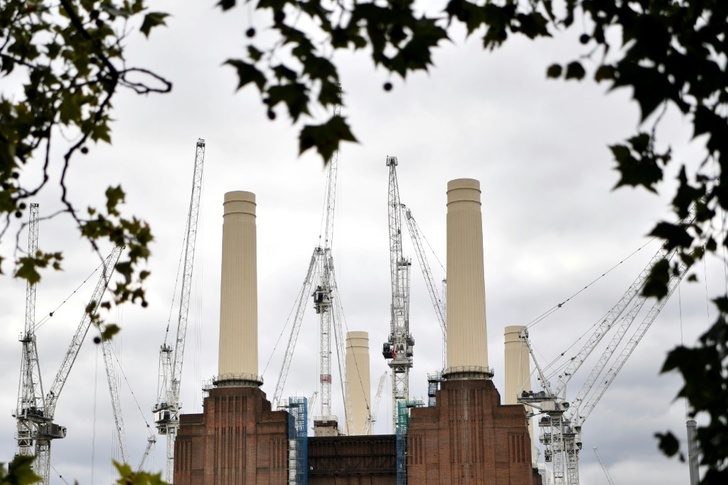With its four huge white chimneys Battersea Power Station has dominated the London skyline for decades, making it one of the British capital's most distinctive landmarks.
Now, nearly 40 years after it was finally decommissioned, it is set to reopen as an office, shopping and restaurant hub plus apartments, in the latest major redevelopment of former industrial sites.
"London's most meticulous post-industrial building restoration is complete," said Ben Walker of LDA Design, which worked on the project.
What has been created on the 42-acre (16-hectare) site was not just a restored building but a "successful new piece of city", he added.
On Friday, the transformed 1930s coal-fired power station -- one of the final phases of the project -- will throw its doors open to the public.
Construction work on the £9-billion ($10-billion) development project began in July 2013.
Overall, the redevelopment features over 250 shops, cafes and restaurants and three million square feet (270,000 square metres) of commercial space.
There are also apartments, a theatre, hotel, events venue and six-acre public park.
Apple alone will take over six floors in the power station's former central boiler house.
An estimated 25,000 people will either live or work on the site.
- State of ruin -
Now firmly established as an iconic structure -- Battersea famously appeared on the cover of Pink Floyd's 1977 album "Animals" with a giant inflatable pig strung between its columns -- it had plenty of critics at the outset.
In the early stages of construction in 1929-30, there were even concerns about the stability of the chimneys.
One sceptic warned that it would be "gigantic and necessarily ugly".
But it went on to win over critics and capture the public's imagination in a way few other buildings have done.

But by the 1970s, its importance was on the wane with the focus of London power generation shifting to new stations on the estuary of the River Thames.
Battersea "A" was decommissioned in 1975 followed by Battersea "B" in 1983.
Over the years, various plans were unsuccessfully floated to redevelop the unused building as it slowly fell into a state of near ruin.
It was saved only after being purchased by a consortium of Malaysian investors in 2012.
Developers, however, faced a range of challenges to transform it -- especially how to preserve the vision of Giles Gilbert Scott, an architect who played a leading role in its construction, while creating "new and dramatic spaces".
After half a century belching out smoke, the steel reinforcement of the chimneys had suffered corrosion.
All four, each with an internal diameter of 8.4 metres (27 feet), had to be dismantled and rebuilt to the original, precise specification.
They have provided one of the redevelopment's new experiences -- a glass lift that ascends 109 metres to the top through one of the chimneys to give a panoramic view.
- 'Serendipity' -
Other features of the original site that have been preserved include Battersea "A"'s temple-like Art Deco Turbine Hall which was considered one of London's finest 1930s interiors.
The Coaling Jetty on the River Thames which opened to the public for the first time in August 2019 is also a remnant of the site's past.
Now a prime picnic and open-air theatre and cinema spot, the 133-metre long jetty was once used to unload coal transported by river onto the station's belt conveyors.

Its younger sibling, Bankside Power Station, designed by Scott, was turned into the Tate Modern art gallery in 2000.
Tom Goodall of urban regeneration specialists Related Argent -- part of the team that worked on London's Kings Cross railway station redevelopment -- said Battersea would have a huge draw as it was an example of "that serendipity of old and new forged together".
But he said the long-term secret of its success would likely be in the community spaces created "that make the magic happen".
"It is what they stand for in terms of their access for the community that is the real stand out point in them," he told AFP.
"It's the ability of people to wander in between the buildings and enjoy them without being a member of a special club that provides their real value."
har/phz/rox
© Agence France-Presse
Your content is great. However, if any of the content contained herein violates any rights of yours, including those of copyright, please contact us immediately by e-mail at media[@]kissrpr.com.
Source: Story.KISSPR.com

